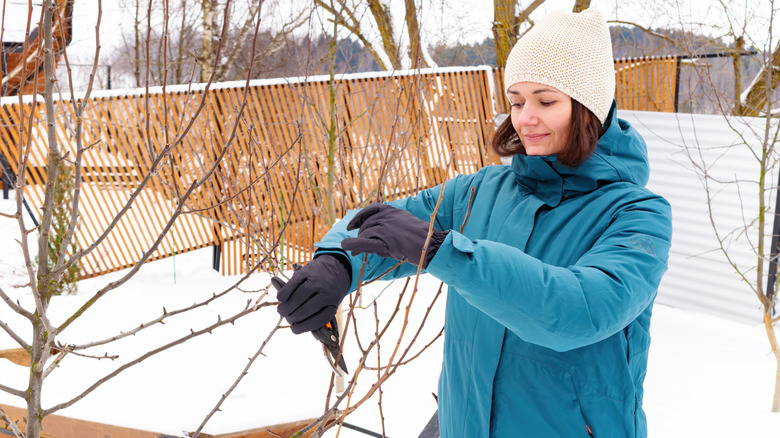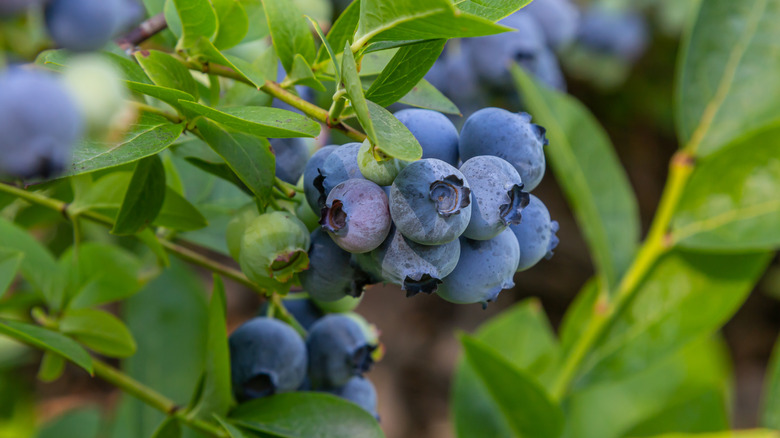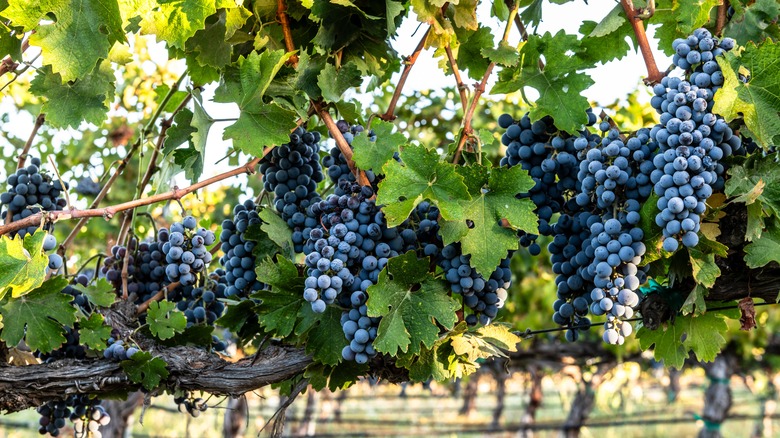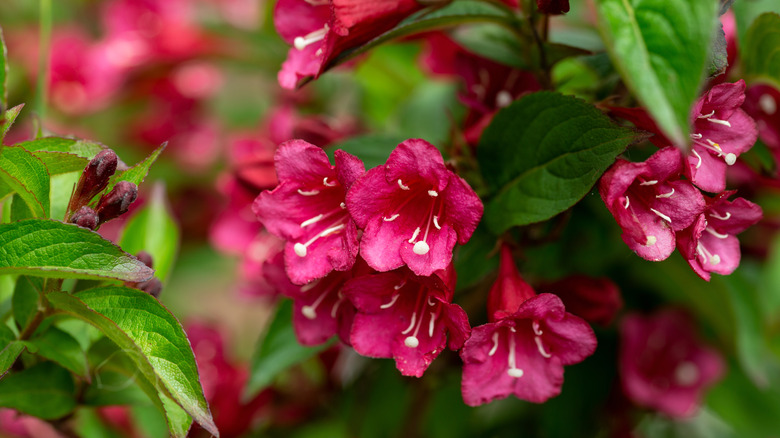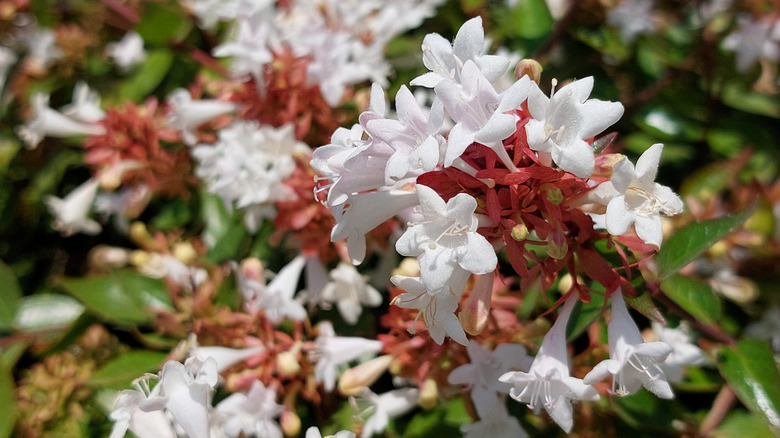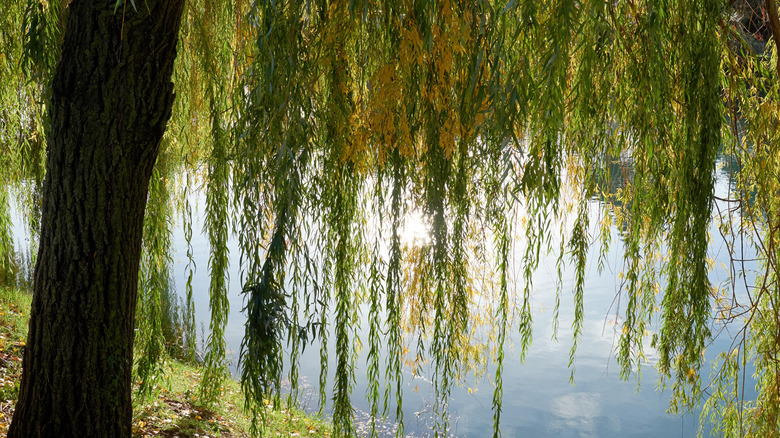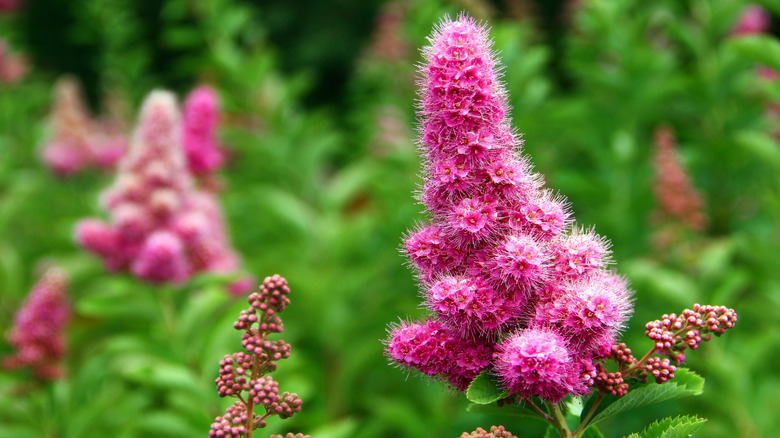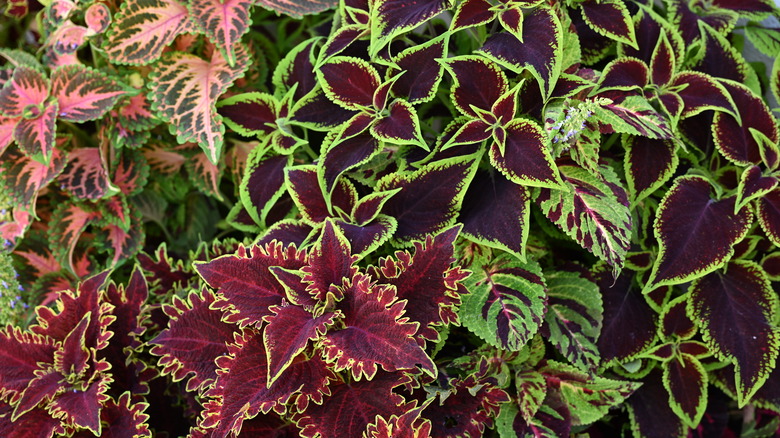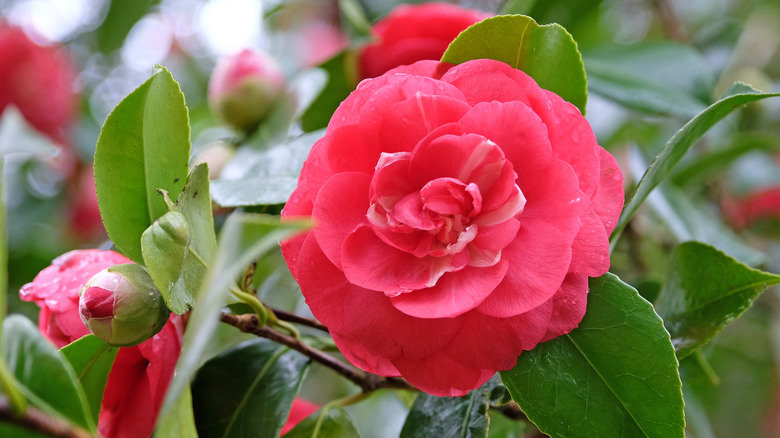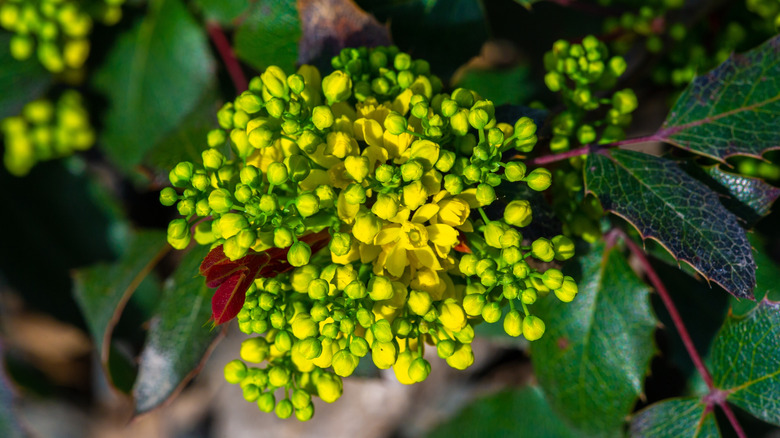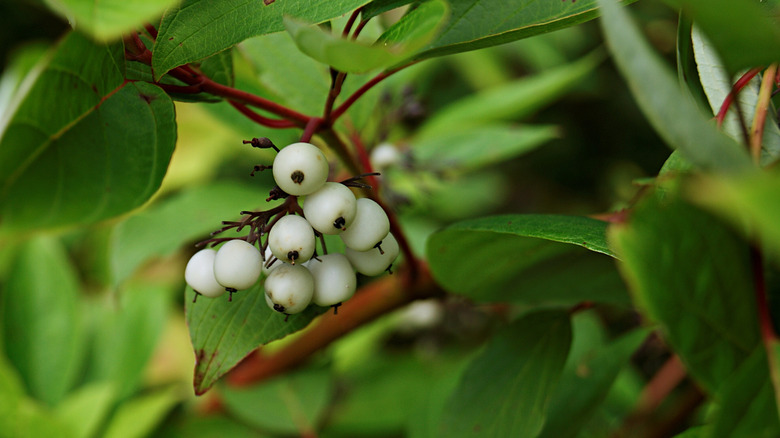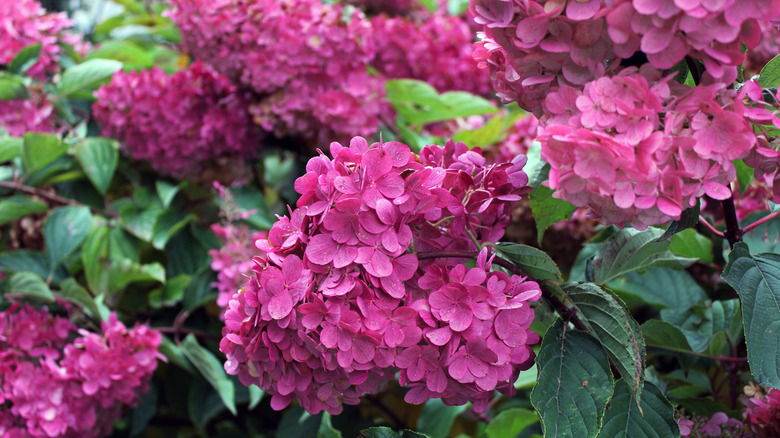15 Plants You Can Propagate From Cuttings In The Winter
Winter gardening typically involves keeping your yard tidy and pruning any dormant plants. However, these colder months are actually an ideal time to propagate certain shrubs and trees. Instead of putting your cuttings in the compost, you may want to keep a few strong branches to make new plants with. Unlike the warmer seasons, where cuttings are usually taken from softwood or semi-ripe wood, winter is a time for hardwood propagation. The cuttings for hardwood propagation are taken from shoots that grew in the previous summer.
You can't propagate all plants from cuttings, especially in the winter. But, there are many woody shrubs and trees that take well when propagated from hardwood cuttings, such as weigela, blueberries, and willow. When you take hardwood cuttings from plants, you need to ensure that you are selecting healthy, disease-free stems. Don't bother trying to propagate those that are damaged — those stems should go straight into the compost. When taking hardwood cuttings, cut off a length of around four to six nodes. You can plant certain cuttings in containers or beds straight away, while others should be stored until the spring.
Currants
If you have currants (Ribes spp.) in your home garden, you probably know that these shrubs do well with a winter prune. But, the next time you give them a prune, you may wish to take off a few healthy stems for propagation. When propagating currants, take off tip cuttings of around 8 to 12 inches. They should be around the thickness of a pencil. Remove any lower buds or stems, then place them directly in the ground or nursery bed. In colder regions, such as Alaska, you may wish to store your cuttings until spring.
Blueberries
Another fantastic fruit crop you can grow from cuttings is blueberries (Vaccinium spp.). You can take healthy stems from your bush during a winter prune to create new plants from, with the optimal time for hardwood cuttings being January and early February. Take off a healthy shoot of around 18 to 36 inches, then divide this into cuttings of four to six inches in length. Just keep the lower part of the shoot, discarding the upper quarter. Then, store the cuttings until April in a refrigerator in a container with sawdust or peat moss.
Grapes
If you have a grape vine (Vitis vinifera) in your garden, you can take cuttings during its winter dormant season. Take cuttings from the previous year's growth on wood that is around a year old. Make sure the cutting has at least three buds but no more than seven. Cut off lengths of around 14 to 16 inches and then store them in a refrigerator before planting them out when the weather gets warmer. Use wood shavings, peat moss, or sawdust to store your cuttings, ensuring that they are kept moist.
Weigela
With their rich, colorful flowers that bloom profusely in the spring, weigela (weigela florida) is a fantastic perennial to bring color and brightness into a yard. If you have one of these beautiful shrubs, you can propagate it from late fall until late winter. Take cuttings from the hardwood of last season's growth, cutting to a length of six to nine inches. There should be a few nodes on the cuttings. After dipping the cuttings in rooting hormone, place them in trays or the same pot. Keep the cuttings outside in a sheltered location.
Roses
You can propagate roses (Rosa spp.) throughout the year with softwood, semi-hardwood, and hardwood cuttings. As there are loads of different cultivars and varieties of roses, you may wish to research the type you have beforehand to ensure that it is suitable for winter propagation. If it is, take a cutting of around six inches in early winter. Then, bury it in soil in a garden bed or a pot, ensuring that only a quarter of the cutting is above the soil.
Glossy abelia
Glossy abelia (Abelia x grandiflora) is a stunning shrub that gets covered in delicate, white blooms from spring until the fall. If you want to propagate your glossy abelia, take leafless stems from the plant in November, December, or January. As this shrub is often pruned in late winter, taking cuttings at the same time is a great way to maintain your glossy abelia and create new blooms. As glossy abelia is sensitive to frost, it is best to store the cuttings until warmer weather, when you can then plant them out.
Willow
You can propagate willow trees (Salix spp) in the late winter when the temperatures are milder. Late February to early March is the best time to take willow hardwood cuttings, as long as temperatures are above freezing. Take cuttings of branches that are around half an inch in diameter, cutting them into 12 to 18 inch sections. Your willow cuttings will need to be stored in a refrigerator until April. Wrap them together and place them in a bag with lightly moist peat moss before putting them in the fridge.
Rose spirea
Many species of spirea can be propagated through hardwood cuttings in winter, and if you have a rose spirea (Spiraea douglasii) in your yard, you can take cuttings in the winter to create new plants. To propagate rose spirea, take cuttings of around 6 to 8 inches in length in December or January. Then, dip the cuttings in rooting hormone before placing them into a potting mix. Keep the cuttings inside with mist and bottom heat before planting them out in late March or April. Make sure you harden them off before planting them outside.
Figs
You can propagate a fig tree (Ficus carica) from a hardwood cutting in the winter. It is best to take the cutting before or after the threat of frost, but always ensure that the leaves have dropped and the tree is in dormancy. Take cuttings of around one foot in length from the tip of the branch. Each cutting should have at least four nodes. You should then store your fig hardwood cuttings, wrapping them in slightly moist newspaper before placing them in the fridge. In early March or April, you can stick them in moist potting soil.
Coleus
As coleus (Coleus scutellarioides) is an annual in many regions, propagating it through cuttings in early winter allows you to grow new plants for the following spring. Take two to six inches of healthy growth from your coleus plant, then remove the leaves from the bottom half. Once you have prepared your cuttings, put the stem in moist potting mix or vermiculite. The coleus cuttings need to be stored indoors in a warm, shady location. You may wish to use a clear plastic bag to cover them for moisture retention, which will help them root.
Camellia
Camellias (Camellia spp.) are fantastic evergreen shrubs that flower in fall and winter to add color and life to the darker months. You can propagate camellias in midwinter by taking small twigs from the plant. The cuttings should have one to three leaves. Once you have collected your cuttings, dip them in rooting hormone and place them in a well-draining rooting medium or a mixture of sand and peat. When your cuttings are planted, place them in a clear plastic bag and put them in a location with bright indirect light.
Oregon grape
If you have an Oregon grape (Berberis aquifolium) in your yard, you can propagate it in early winter by taking cuttings from the current year's wood once the tree has entered dormancy. November is a great time to take cuttings from this shrub. The stem should not have any leaves or swollen buds. Use a rooting hormone on the cuttings and then place them in a mixture of two parts vermiculite and one part sand. They should then be put in a cold frame to protect them from the winter weather.
Red twig dogwood
Red twig dogwoods (Cornus sericea) are great plants to propagate in the winter as they tend to root easily from hardwood cuttings. You need to take the cuttings in late winter, just before your dogwood comes out of dormancy. Take stems that are in their first year of growth, ensuring that they are around the diameter of a pencil. Stems with healthy, big buds are good for propagation. Cut the stems to around 8 to ten inches long, cutting just below a node. Then, place them in a clear container with two to three inches of water.
Japanese maple
If you have a beautiful Japanese maple tree variety, you can multiply it through propagation. To propagate Japanese maple (Acer palmatum) in winter, take hardwood cuttings during its dormancy. Cut off 6 to 8 inches of last year's growth that has two or three nodes. Dip the cuttings in a rooting hormone and place them in a potting medium of two parts peat and one part perlite. The potting medium shouldn't be too moist, but it needs to be well aerated. Bottom heat is helpful when propagating Japanese maple.
Hydrangea
For more beautiful hydrangea (hydrangea spp.) blooms to fill your garden with, take hardwood cuttings from them in November or December. Take a cutting that is around five to six inches long from a branch that did not flower this year. Then, remove the lower leaves and dip the bottom in rooting hormone. You may want to cut down the larger leaves, too. Put the cuttings in a sandy soil mix or vermiculite and place them somewhere sheltered, like your basement. Keep an eye on them over winter and water them so they don't dry out.
